A Romanesque Revival Landmark by Brooklyn's School Architect in Cypress Hills
It’s not very often that an architect can shape an entire portion of a city, but that’s what James W. Naughton did with the Brooklyn Public School system between the years 1879 and 1898.

Photo by Susan De Vries
Editor’s note: This story is an update of one that ran in 2012. Read the original here.
It’s not very often that an architect can shape an entire portion of a city, but that’s what James W. Naughton did with the Brooklyn Public School system between the years 1879 and 1898. In those 19 years, he was the sole architect of hundreds of school buildings in the City of Brooklyn, all the result of his position as Superintendent of Buildings for the Board of Education of the City of Brooklyn.
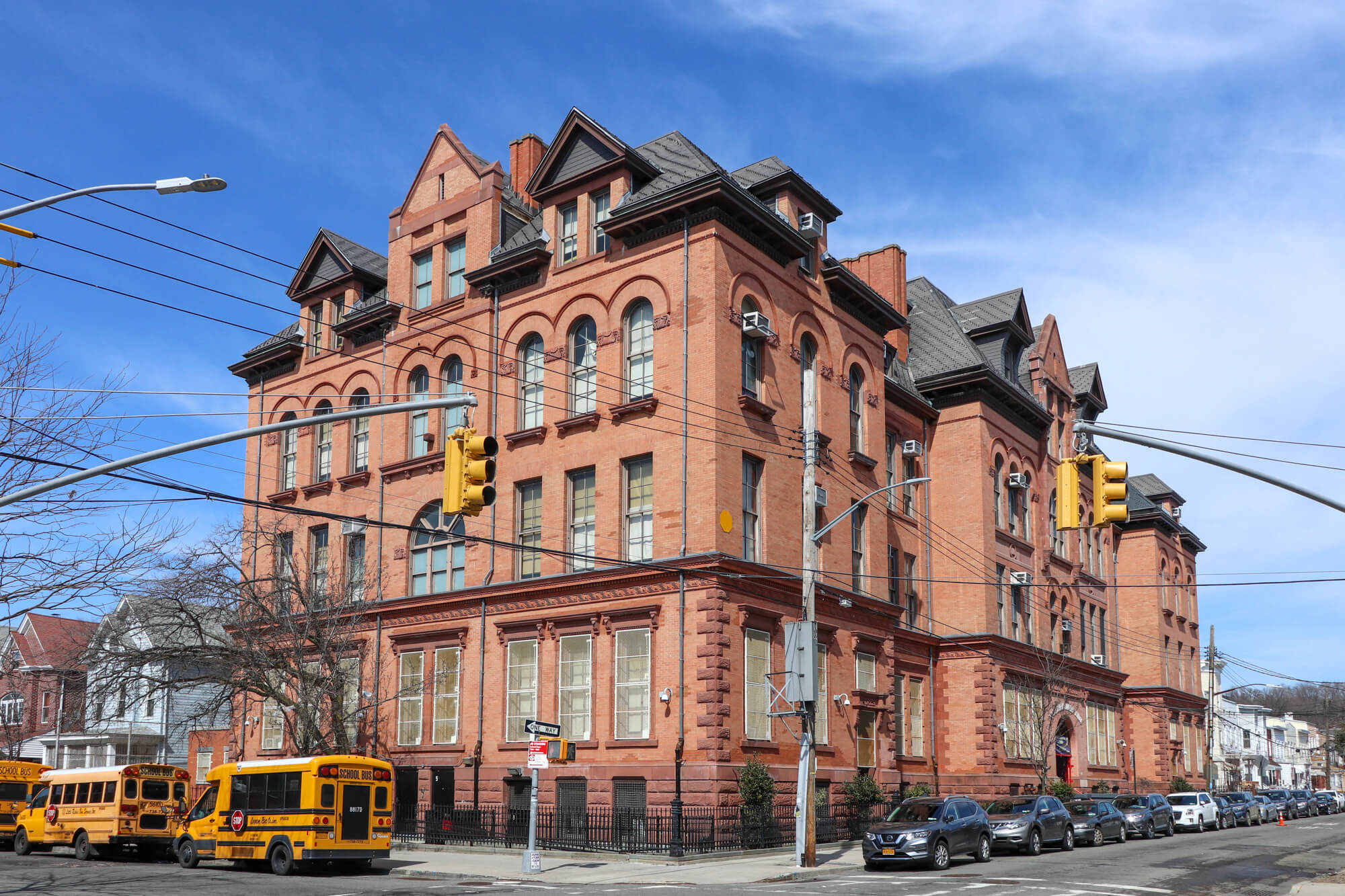
As Brooklyn was growing in leaps and bounds at the end of the 19th century, so too was the need for more public schools. Immigration, the influx of people from Manhattan and the rest of the country — all contributed to an ever-growing number of children who needed to be educated.
As an independent city, Brooklyn led the region in educational innovation, having established the first high schools in the New York City area. Naughton was there when it happened, and designed some of Brooklyn’s most iconic schools.
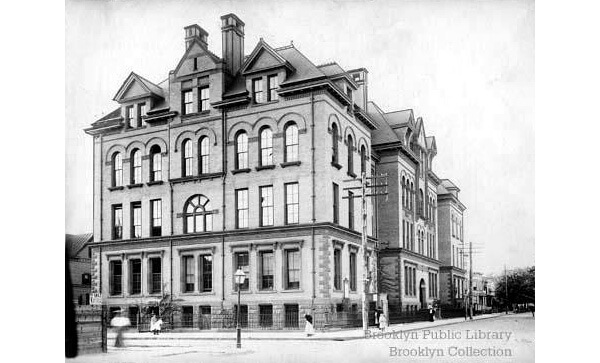
Girls High School, Boys High School and the P.S. 9 Annex are probably the most well-known of Naughton’s schools, but he designed many, many more throughout Brooklyn — over 100 in total. Today there are only a fraction left, as many were seen as antiquated or just not large enough and were replaced by larger or more modern buildings.
P.S. 108 at 200 Linwood Street in Cypress Hills is one of the few remaining Naughton buildings that is still a functioning public school. Some, like Girls High and Boys High, are still educational buildings, but no longer public schools. Some, like P.S. 9, have been repurposed into housing, and some are now used by religious or other groups for private and charter schools or for other community use.
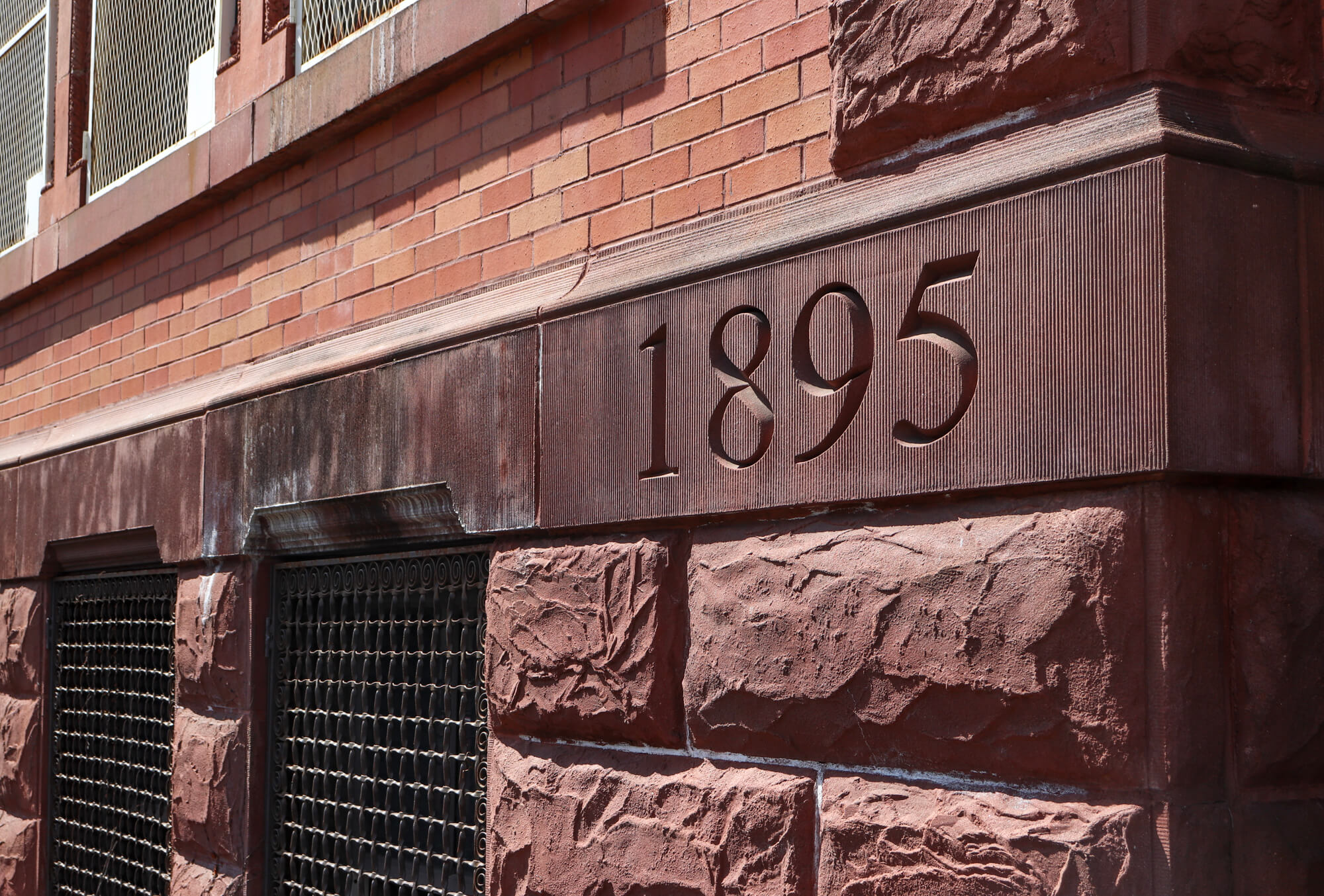
P.S. 108 was designed and built in 1895, towards the end of Naughton’s career. He died in 1898, and even if he had not, the consolidation of Brooklyn into New York City that year would have eliminated his job. The building is classic Naughton, a huge Romanesque Revival pile, with his characteristic use of brick, brownstone and terra cotta. His style had lighted up a bit since his masterpiece, Boys High School, was built only four years before.
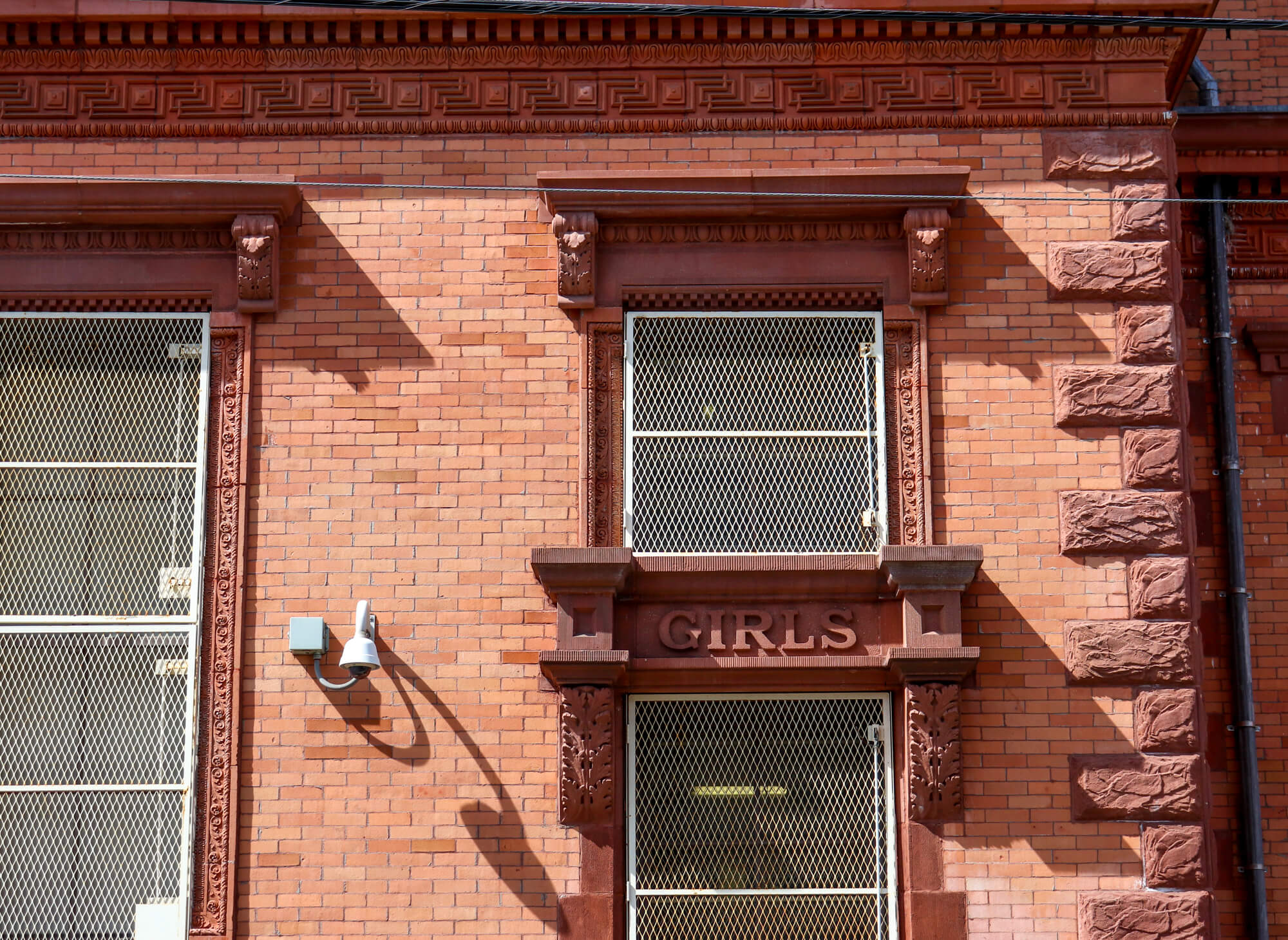
This school has much less ornamentation, and a totally different structure based on a Second Empire-style plan: three bay-wide pavilions on both sides, connected by recessed wings to a seven-bay-wide central entrance. The use of pavilions makes the building flow, adding interesting shadow and contrast to what is an enormous school. Naughton loved dormers and piled them on here too. Large windows admitting light and air were also a prominent design feature, for both practical and aesthetic reasons, and this building does not disappoint in that regard either.
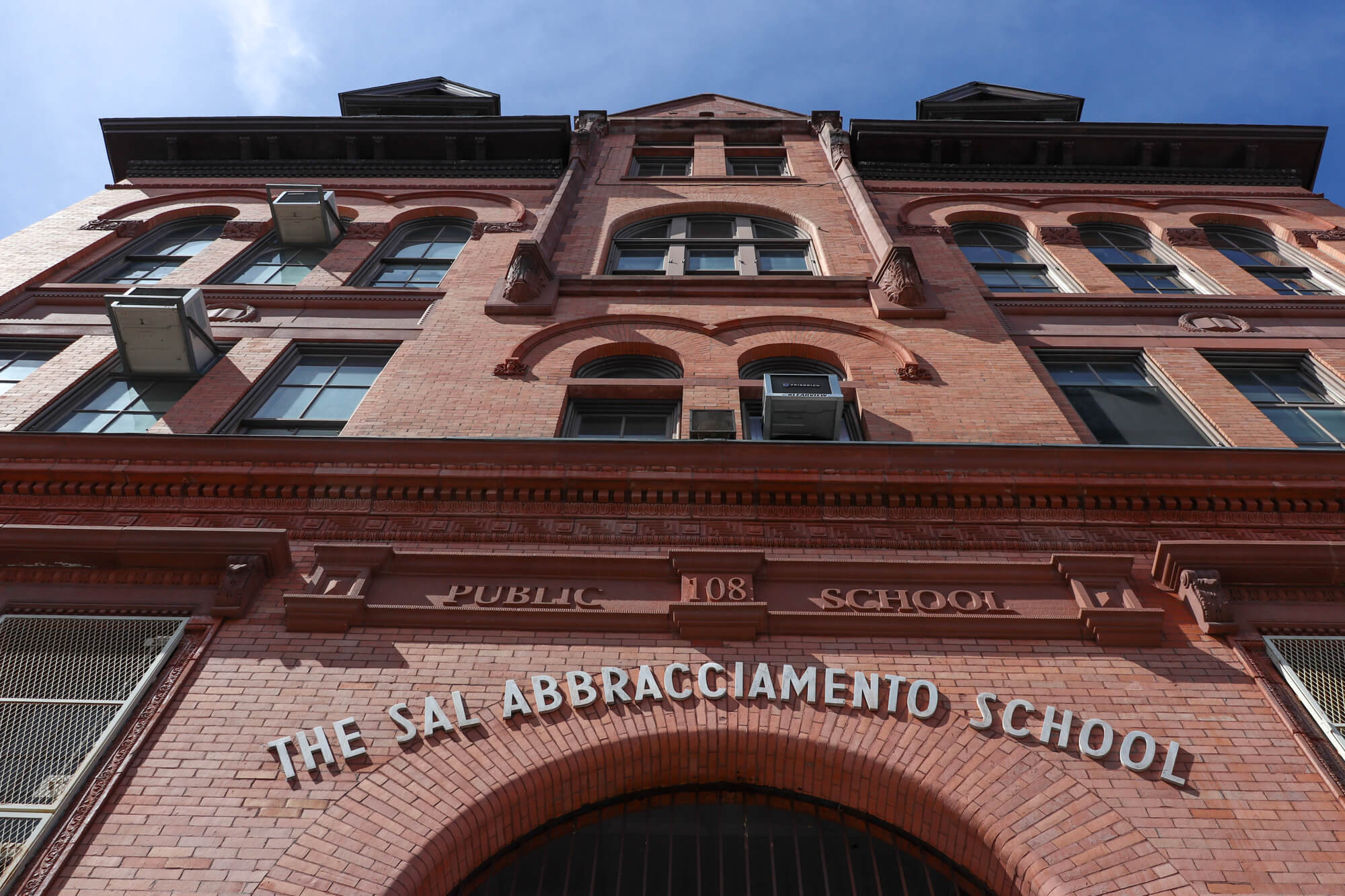
Today, it’s still a public school, with classes from pre-kindergarten through the sixth grade. The school was renamed in honor of one of its graduates, Sal Abbracciamento. During the 1960s, the city decided to close P.S. 108, located in what had become a lower income Hispanic and black neighborhood, part of greater East New York.
Abbracciamento led a successful campaign to save the school, forming an organization of past alumni and staff; current parents, teachers and students; and local politicians, resulting in the Board of Ed changing its mind. A grateful community named the school after him for his heroic efforts. The building was further protected by being designated an individual landmark in 1981.
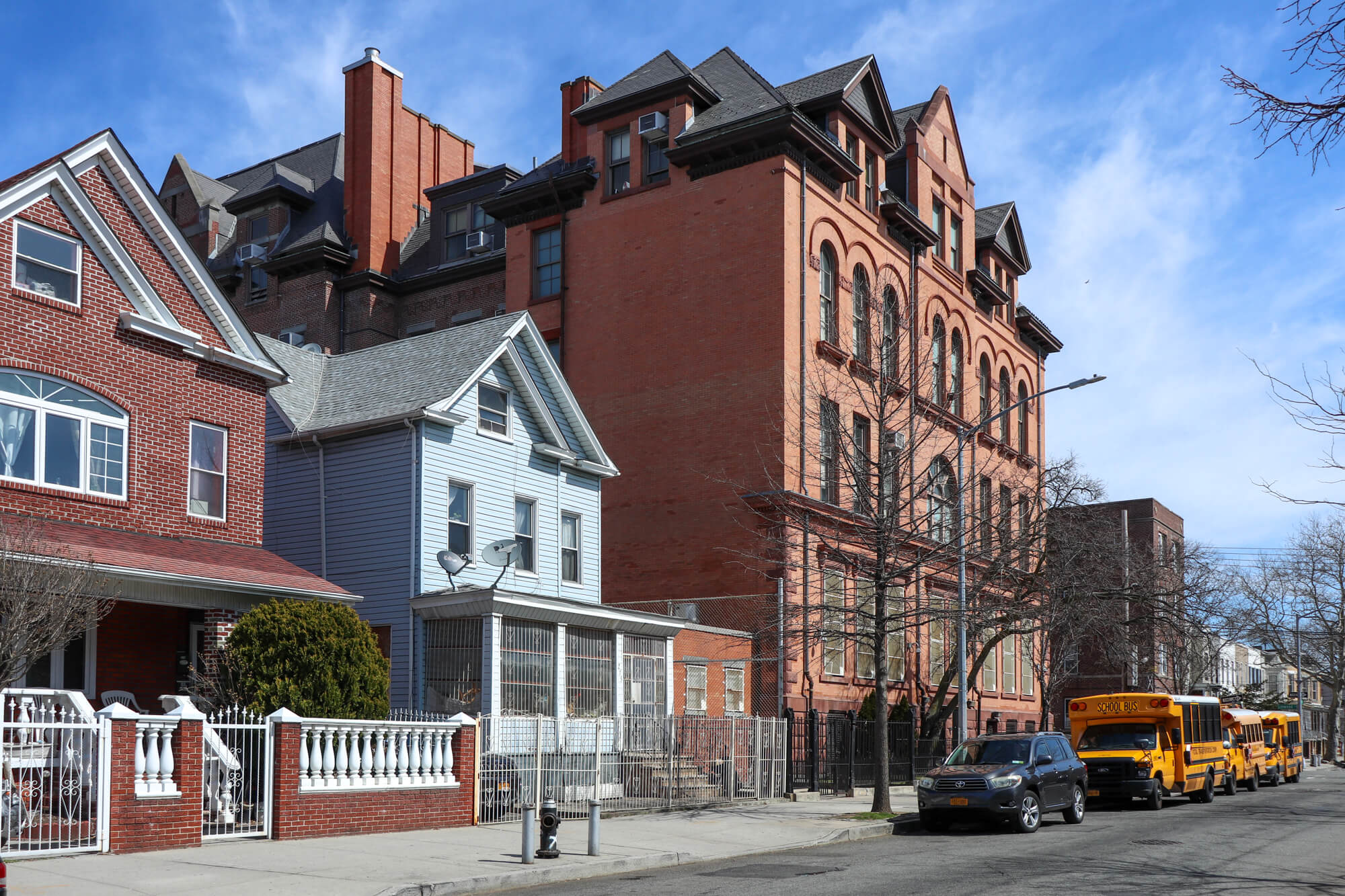
[Photos by Susan De Vries unless otherwise noted]
Related Stories
- Walkabout: A Guide to James W. Naughton, Master of Brooklyn School Architecture
- An Old Bit of New Lots: The 1873 Town Hall
- Courting History in East New York
Email tips@brownstoner.com with further comments, questions or tips. Follow Brownstoner on Twitter and Instagram, and like us on Facebook.





What's Your Take? Leave a Comment